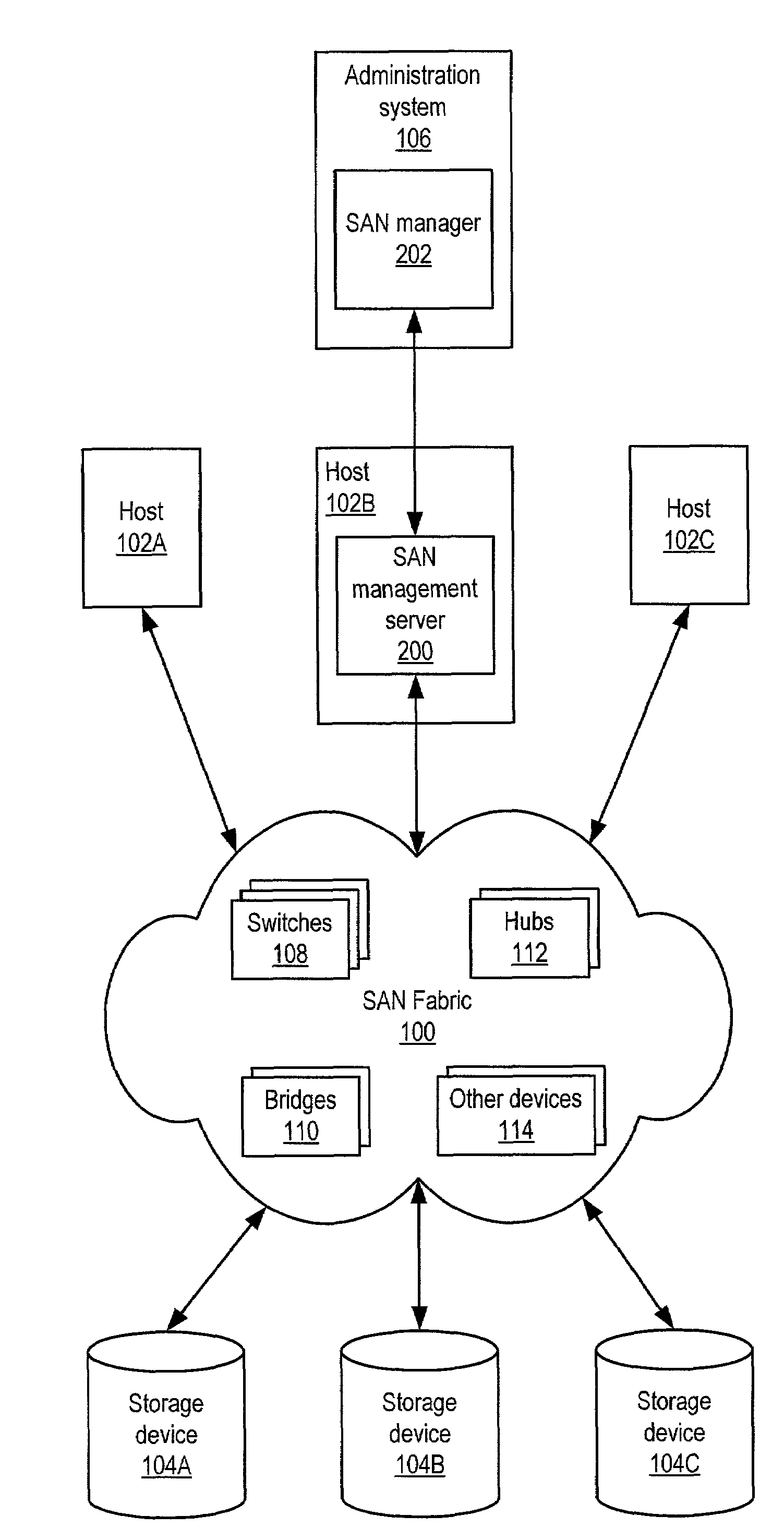Mapping discovered devices to SAN-manageable objects using configurable rules
a discovery device and configurable rule technology, applied in the field of storage management, can solve the problems of scsi architecture restrictions that are too costly for scsi to continue as a viable solution, parallel scsi bus is susceptible to data errors, and adds a significant load to the network
- Summary
- Abstract
- Description
- Claims
- Application Information
AI Technical Summary
Benefits of technology
Problems solved by technology
Method used
Image
Examples
Embodiment Construction
[0048]Embodiments of a centralized Storage Area Network (SAN) management system are described. FIG. 1 shows an exemplary SAN implementing an embodiment of the SAN management system. For one embodiment, SAN may be described as a high-speed, special-purpose network that interconnects storage devices 104 (e.g. storage devices 104A, 104B, and 104C) with associated data servers (e.g. hosts 102A, 102B, and 102C) on behalf of a larger network of users. This dedicated network may employ Fibre Channel technology.
[0049]A SAN may be part of the overall network of computing resources for an enterprise or other entity. A SAN may include one or more hosts 102 (e.g. hosts 102A, 102B, and 102C), one or more storage devices 104 (e.g. hosts 102A, 102B, and 102C), and one or more SAN fabrics 100. A SAN may also include one or more administration systems 106. One or more end-user platforms (not shown) may access the SAN, for example via a LAN or WAN connection to one or more of the hosts 102.
[0050]Stor...
PUM
 Login to View More
Login to View More Abstract
Description
Claims
Application Information
 Login to View More
Login to View More - R&D
- Intellectual Property
- Life Sciences
- Materials
- Tech Scout
- Unparalleled Data Quality
- Higher Quality Content
- 60% Fewer Hallucinations
Browse by: Latest US Patents, China's latest patents, Technical Efficacy Thesaurus, Application Domain, Technology Topic, Popular Technical Reports.
© 2025 PatSnap. All rights reserved.Legal|Privacy policy|Modern Slavery Act Transparency Statement|Sitemap|About US| Contact US: help@patsnap.com



